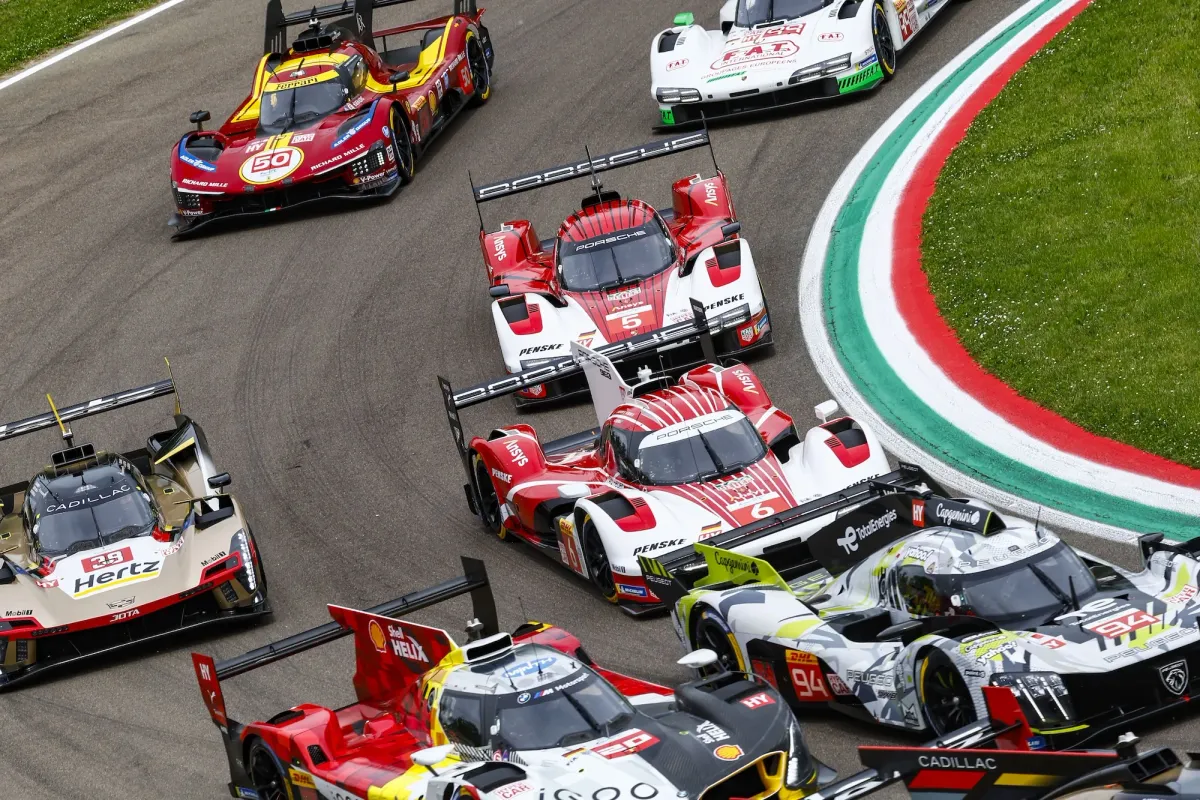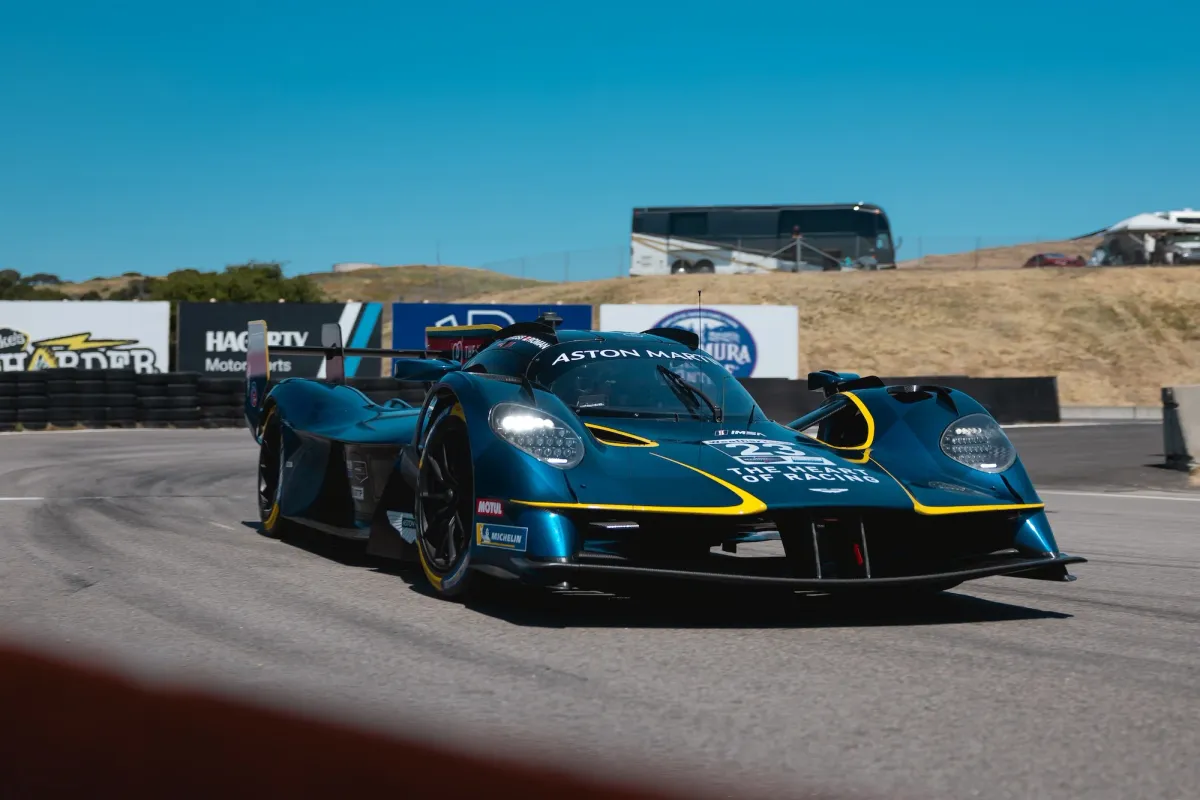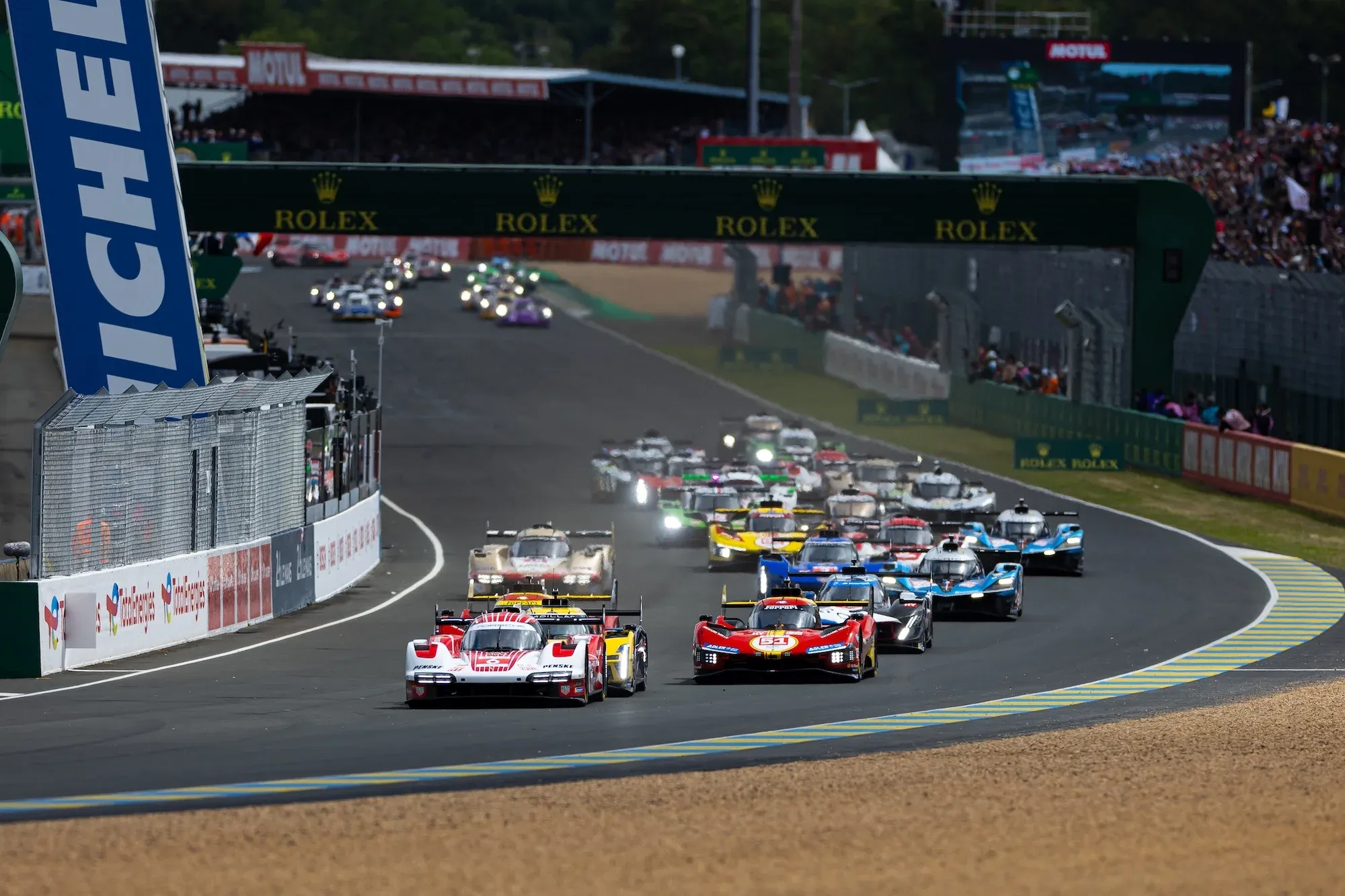Download The Racing Line on iOS today and get 70% off a year's subscription!
The ACO has just officially published the Balance of Performance for the Le Mans 24 Hours, which will set the power and weight for the cars for the crucial day of testing and preparing for the biggest week in the sportscar racing calendar.
Let's take a look at the weight, power and energy per stint, before looking at the power to weight ratios.
Weight
As is usual for the Balance of Performance in WEC at the moment, the Toyota is bar the heaviest car. The GR010 Hybrid will be 15kg heavier than the next heaviest car, the Ferrari 499P.
There's then a group of six cars that will be within 5kg of each other. These are, in order, the Ferrari (1042kg), Porsche 963 (1041kg), BMW M Hybrid V8, Peugeot 9X8, and Alpine A424 (1039kg), and then the Cadillac V-Series.R on 1037kg.
The Aston Martin Valkyrie will be on minimum weight as per the regulations, 1030kg, for Le Mans. That's 5kg lighter than it's been so far in WEC competition this year.

Amongst the 'top teams', the traditional big three of Toyota, Ferrari, and Porsche, there's a trend here of all three having weights reduced compared to Spa. BMW and Alpine, which have emerged this year as two of Ferrari's closest challengers, have also had their minimum weights reduced compared to Spa. As have Cadillac, in fact.
Peugeot, is, in actuality, the only car to have had its weight increased since the Belgian round.
Power (before 250kph)
If the trend is weights decreasing for Le Mans, in various degrees of significance, the trend for power is it increasing since Spa.
Out of the eight cars in Hypercar, five will see their amount of power increase.
Interestingly, Toyota have been given max power according the regulations — 520kW. This is the same as what Aston Martin and Cadillac will have as well.
Alpine will have 517kW, with Ferrari on 515kW. Porsche are next up on 511kW, then BMW on 510kW, and Peugeot on 507kW, the lowest amount of power available.
Support Only Endurance's independent sportscar journalism today from £1/$1/€1 a month
Power (after 250kph)
Unsurprisingly, Ferrari lose power after 250kph. They'll have virtually the same kW as Peugeot — 500.065kW for Ferrari, 500.916kW for Peugeot.
With their pre-250kph power significantly reduced from Spa, and their weight up as well, I'm expecting Peugeot to struggle for pace.
BMW, Porsche, Aston Martin, Cadillac and Toyota will all be very close on this figure, with roughly 6kW separating them.
Alpine will be a bit lower, on 508.211kW.
Energy per stint
Rather interestingly, much of the energy per stint figures have increased significantly for Le Mans, both since last year, and since Spa in May.
The biggest increase compared to Spa is 12MJ, for Porsche and BMW. The smallest increase isn't an increase at all, or a decrease, with Aston Martin remaining on 908MJ.
However, comparing energy per stint to Spa doesn't massively matter. It's Le Mans last year we need to compare it to.
When viewed in this light, BMW get the largest increase — 15MJ, from 904MJ to 919MJ.
Porsche will see an increase of 13MJ, from 904MJ as well, to 917MJ, two MJ below BMW.
Porsche were setting 12 lap stints, roughly, last year. That works out to roughly 75MJ a lap. So, 13MJ equates to a little less a third of a lap for the Porsche 963.
So, could we see some cars doing a lap extra on fuel, or as WEC calls it, virtual energy? It's certainly possible, especially with fuel saving to cut out at least one stop.
Power-to-weight ratios
As you can see from the above graph, the power to weight ratios for the pre-250kph state is fairly close. Aston Martin have the best with the Valkyrie, followed by Cadillac and Alpine.
Interestingly, Peugeot have gone from the best power-to-weight pre-250kph at Spa, to the worst at Le Mans.
Toyota and Ferrari, the frontrunners for the past two years at Le Mans, are middling here, 0.494kW/kg for both manufacturers. Porsche, who are struggling for pace this year but could still be considered a 'top team' — never count out Porsche or Penske — are 0.003kW/kg lighter than them.
But generally speaking, it's fairly close when looking at things from this lens.
As Ferrari lose 3.3% power after 250kph, their power-to-weight ratio changes accordingly. They now have the lowest power-to-weight ratio of any team or car, including Peugeot, although only just.
It's close at the top, with Aston Martin, BMW, Porsche, and Cadillac separated by 0.006kW/kg.
Alpine and Toyota are a bit lower, but are only separated by 0.002kW/kg.
How does this compare to Le Mans last year?
As you can see, every team has an increased power-to-weight ratio for pre-250kph, compared to 2024.
The biggest increase is 0.010kW/kg, for Alpine.
Ferrari's has increased by 0.007kW/kg, on par with increases for other teams. With Ferrari one of the fastest cars at Le Mans year, it'll be interesting to see how this affects the competitive order.
Toyota will get a 0.012kW/kg increase. Porsche 0.001kW/kg.
The picture changes slightly for the post-250kph figures. Peugeot's decrease is quite dramatic — 0.008kW/kg. Alpine's also decreases, although not as significantly as Peugeot's.
What does this mean?
It's very hard to say what this all means.
My own personal view is the pack will close up, both compared to last time out at Spa and to Le Mans last year.
I think Ferrari will still be the fastest car. Toyota will be up there as well — they always are at Le Mans. Peugeot has been served a difficult hand and may struggle.

In that midfield group — Porsche, Cadillac, BMW, Alpine — it'll be very tight. Hopefully there is no top group and these four plus Toyota and Ferrari will be that top group, intermixed among the manufacturers and teams.
Aston Martin will be interesting, as we have no data on them from last year. But with max pre-250kph power and minimum weight, maybe they'll be able to spring a surprise.
Let's see!
Feature image: DPPI / WEC
Download The Racing Line, your personalised motorsport calendar, on iOS today to get up to date session times and customisable notifications for over 150 different series, including single seaters, sportscars, rally, bikes, and much more.




